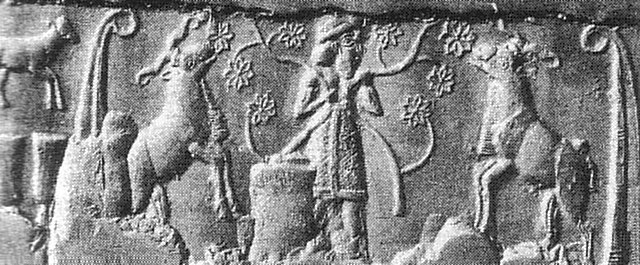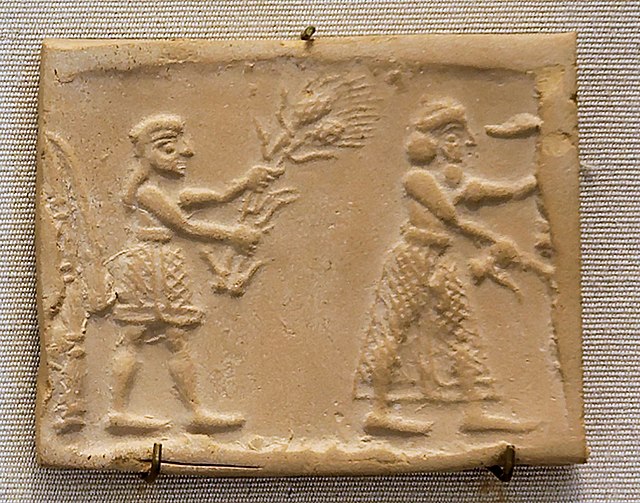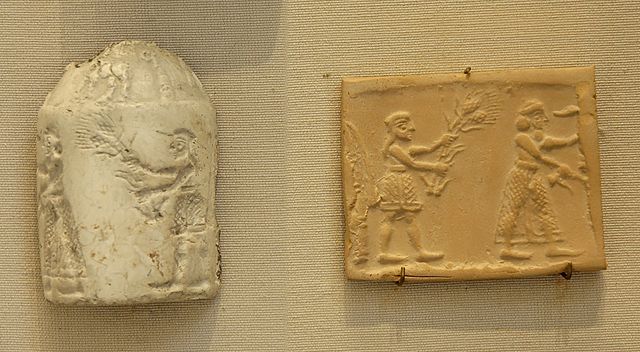The history of Sumer spans the 5th to 3rd millennia BCE in southern Mesopotamia, and is taken to include the prehistoric Ubaid and Uruk periods. Sumer was the region's earliest known civilization and ended with the downfall of the Third Dynasty of Ur around 2004 BCE. It was followed by a transitional period of Amorite states before the rise of Babylonia in the 18th century BCE.
Gudea of Lagash, circa 2100 BCE (Louvre)
Votive relief of Ur-Nanshe, king of Lagash, representing the bird-god Anzu (or Im-dugud) as a lion-headed eagle. Alabaster, Early Dynastic III (2550–2500 BC); found in Telloh, ancient city of Girsu
Cylinder seal impression from Uruk, showing a "king-priest" in brimmed hat and long coat feeding the herd of goddess Inanna, symbolized by two rams, framed by reed bundles as on the Uruk Vase. Late Uruk period, 3300–3000 BC. Pergamon Museum/ Vorderasiatisches Museum.
Gold helmet of Meskalamdug, ruler of the First Dynasty of Ur, 26th century BCE.
Uruk, today known as Warka, was a city in the ancient Near East situated east of the present bed of the Euphrates River on the dried-up ancient channel of the Euphrates. The site lies 93 kilometers northwest of ancient Ur, 108 kilometers southeast of ancient Nippur, and 24 kilometers southeast of ancient Larsa. It is 30 km (19 mi) east of modern Samawah, Al-Muthannā, Iraq.
Devotional scene to Inanna, Warka Vase, c. 3200–3000 BC, Uruk. This is one of the earliest surviving works of narrative relief sculpture.
Uruk King priest feeding the sacred herd
An Uruk period cylinder-seal and its impression, c. 3100 BC. Louvre
Partially reconstructed facade and access staircase of the Ziggurat of Ur, originally built by Ur-Nammu, Neo-Sumerian period, circa 2100 BC








